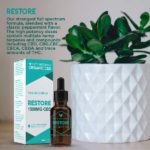No products in the cart.
CBD Extraction Methods Explained: Everything You Need to Know
After hearing about numerous CBD extraction methods, you might be wondering what they are, how they work, and what difference they really make. The good news is that the answers to these questions are quite simple.
What does “extraction” mean?
For starters, extraction is the process of getting harvested hemp and taking out cannabinoids like CBD, CBC, CBG, and THC. While people don’t commonly discuss it, the extraction process is a crucial step in formulating CBD oil. It can directly impact the quality of the final product. Depending on the extraction method that brands use, CBD oil can either help or fail to benefit you. This is also true if you prefer to create your own CBD products by extracting plant matter from hemp.
Common extraction methods
If you prefer to make your own products, there two conventional CBD extraction methods that you probably use at home.
1. Heat Extraction
This process is not the most efficient CBD extraction method. But heat extraction still allows you to harness some of the hemp’s most active components. If you decide to use this method, the instructions are manageable.
Heat the hemp in the oven at 250°F for 45 minutes. While it’s in the oven, turn the hemp every 15 minutes to ensure you heat the entire plant. This process will decarboxylate the hemp, enabling you to convert acidic cannabinoids, such as cannabidiolic acid (CBDA), into the therapeutic nutrients you seek, like CBD.
After you complete that step, place the hemp in a crock-pot with your carrier oil. Butter and coconut oil are both recommended, as each one is a great option. But once you choose your preferred oil, put the heat on low and keep the crock-pot at that temperature for 24 hours. The next day, strain the plant material. Then, you’re finished.
2. Alcohol Extraction 
This CBD extraction method is also widely known as ethanol extraction. It’s a relatively straightforward process, making it an excellent choice for beginners who want to develop their own CBD oil.
To begin, decarboxylate your hemp. Then, place your flower in a jar of alcohol and let it sit for six weeks until you produce an extract. Afterward, remove the resin and filter the remaining solvent.
Once you finish those steps, heat the solution in a double boiler until it simmers lightly. This step will evaporate the alcohol at a low temperature. Finally, let the blend simmer for approximately 30 minutes until the alcohol has completely evaporated. The leftover product will be your CBD oil.
Industrial CBD Extraction Methods
Of course, if you don’t wish to make your own CBD oil, there are plenty of products that you can buy. Brands have more technical methods to get the most out of the extraction process. And while their methods are more extensive and complex, it’s still important to be aware of them because you can’t forget: the CBD extraction method brands use will influence the final product.
If you have specific preferences, expectations, or needs, you should know the different extraction methods that companies utilize and how those methods impact the CBD oil you purchase. To ensure you buy a product that meets your expectations, here are the most common methods of extraction that CBD companies use to formulate their oils.
1. Butane Extraction
Many people in the industry dislike this method, as large quantities of residual solvent may be left in the finished CBD product if the process is not conducted precisely.
The highly explosive butane means this technique is also dangerous. When brands use it, there’s always a risk of experiencing an explosion. And even if that doesn’t happen, the butane method is still an unclean form of extraction that leads to inferior CBD oils.
2. Ethanol Extraction
In simplified terms, this is like a scaled-up version of the alcohol extraction method. Ethanol extraction is very popular due to its effectiveness, the cleanliness of the process, and its relatively low setup cost.
However, while ethanol extraction has its advantages, CBD brands used to consider this method as dirty. Leftover ethanol used to remain in the finished products, tainting the pure CBD oil that brands wanted to achieve. But with technological advancements, the ethanol extraction method has become a much cleaner process for companies to use.
3. CO2 Extraction
CO2 extraction is the cleanest method for both the environment and the consumer. With this method, brands don’t need to evaporate anything out of the final product. It’s a complex extraction process that passes highly pressurized CO2 through a series of chambers to separate and capture specific compounds from raw cannabis.
In the long-run, this method is cheaper than alternatives. It doesn’t require brands to constantly purchase solvent or transport and store hazardous chemicals like ethanol or butane. Kat’s Naturals prefers to use C02 extraction given its benefits, but many CBD brands still choose ethanol extraction because of its low setup cost.
But regardless of the extraction method that brands use, companies do not stop working once they extract the CBD from the plant. What remains is the process of turning the cannabinoids, also known as crude oil, into the CBD oil that you find in stores.
Making CBD Oil: The Role of Rotovap and Winterization
If you’re more interested in purchasing products from CBD brands that use ethanol or CO2 extraction, their formulation processes are fairly similar. The only difference will lie in the initial stages of the process, specifically with regards to ethanol extraction.
With ethanol extraction, brands have to use a Rotovap to evaporate the ethanol. This process leaves behind crude CBD oil, which companies have to further refine to remove the waxes and plant material that remain. Once brands complete this step, the next phase is winterization, a process that utilizes cold temperatures and a solvent to separate lipids and other desired oil compounds from the waxes. This method should happen regardless of whether CBD brands use ethanol or CO2 extraction.
With winterization, brands put the oil through a deep chill that separates the various components of the product. Solid material that is not rich in cannabinoids and that gives the CBD oil an unpleasant taste, rises to the top so that brands can remove it.
However, some companies like to skip winterization. They keep the bad taste and explain it away by claiming their products contain extra “plant-based nutrients.” These additional nutrients, however, offer no medical benefits. The only advantage brands offer when they skip a stage in the production process is a reduced price.
Distillation, Bottling, and Essential Oils: The Final Steps in Making CBD Oil
For CBD companies that don’t gloss over winterization, their next step is distillation. This stage requires brands to evaporate the crude oil and separate its heavier components from its lighter components to purify the product. Each journey through the distiller makes the CBD oil purer. But the distiller also evaporates terpenes that would provide an enhanced effect.
Different brands aim for different levels of purity based on the effect and taste they want to achieve. For example, as more terpenes evaporate in the distiller, the CBD oil’s color becomes golden, and its taste improves. This enhanced taste might be a benefit if you care more about the flavor and CBD versus the additional terpenes.
But what if you only care about consuming CBD and not the flavor or other nutrients? In this case, you should buy from brands that develop broad-spectrum distillates. These products undergo distillation so many times that only CBD and one or two other cannabinoids remain. But Some brands like Kat’s Naturals want you to experience the benefits of terpenes and CBD working together, so we like to keep a few terpenes intact even if the taste isn’t as delicious. Overall, what happens during the distillation process all depends on the brand’s vision.
After distilling the oil to the desired purity, the last and final step is to bottle the product and add any essential oils or other ingredients. In total, there are five to ten steps that brands have to complete to develop CBD oil, and that is true regardless of whether the company uses butane, ethanol, or CO2 extraction.
Which CBD Extraction Method Is Best?
So, having addressed the various extraction methods and the entire process from harvested hemp to CBD oil, you’re left with one question: should you buy a product that’s formulated using CO2 or ethanol extraction?
To be honest, there is little to separate ethanol and CO2 extraction.
With ethanol extraction, the product will contain residual solvent if the extractor doesn’t sufficiently evaporate out the ethanol, but this risk is decreasing thanks to technological improvements. The risk can also be minimized by opting for a reliable brand. If you don’t want to risk ingesting additional chemicals, you can simply choose a credible CBD brand to buy from or purchase CBD oil that’s gone through CO2 extraction.
Ultimately, selecting one is a matter of personal preference.
Do you know someone who wants to learn more about the various CBD extraction methods? Please share this article with them now!





